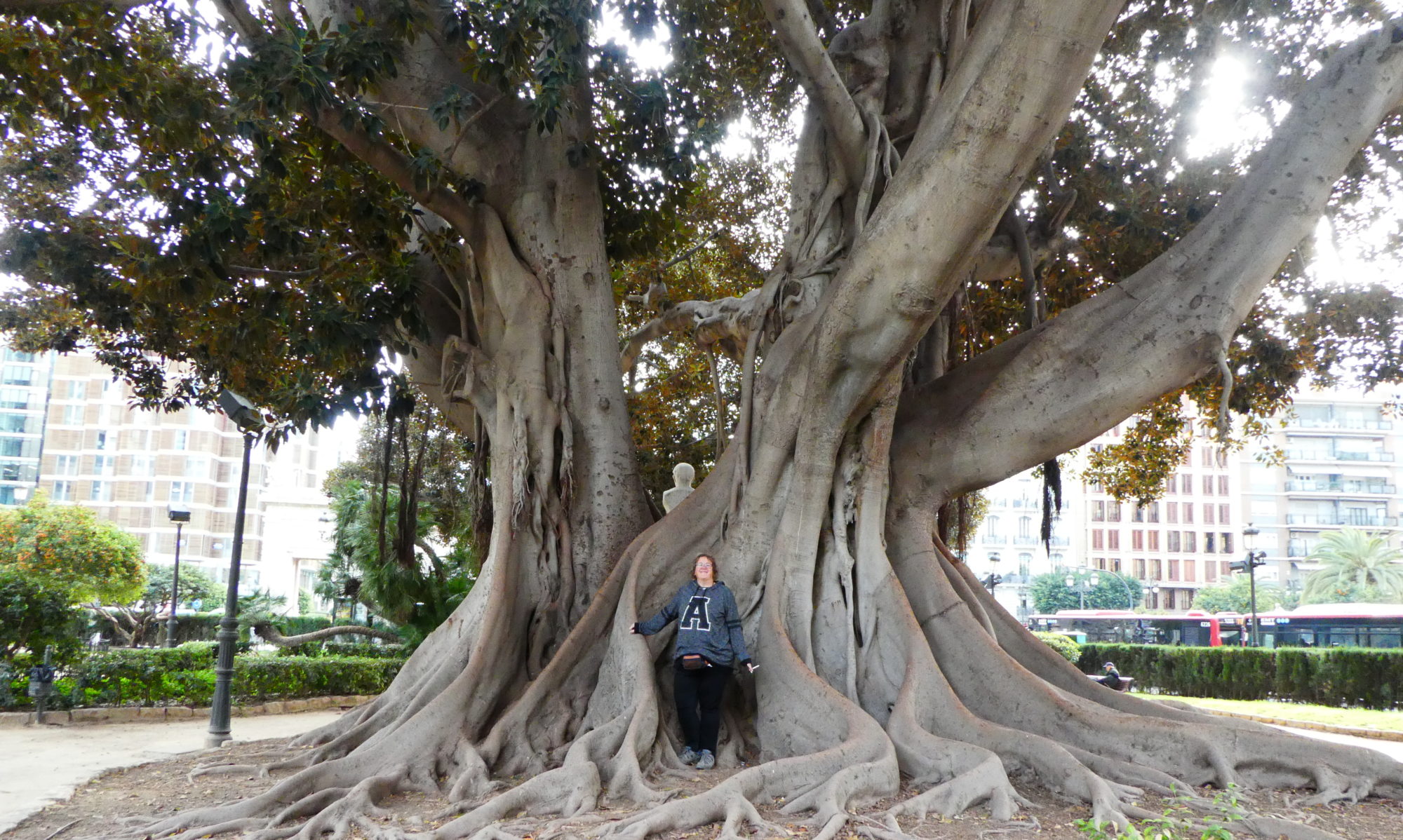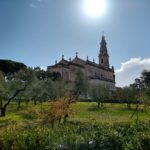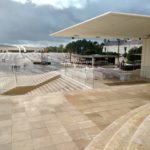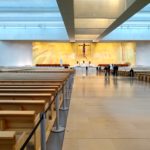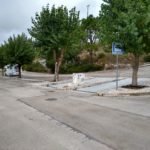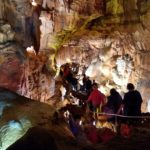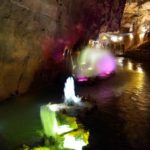In the town of Fatima is another huge church and basilica on the pilgrims network. Fatima is important to Catholics because its where, in 1917, Mary appeared to three shepherd children as a ‘Marian apparition’. Since then the church and shrine at Fatima has grown to become a big part of the catholic faith.
The Basilica to Fatima is actually quite modest, most striking is that the stone it’s made from is very light in colour. At the other end of a large sloping courtyard, there is a second, massive structure – the Basílica da Santíssima Trindade. This is a very modern building, having been constructed in 2007 and is the world’s 8th largest church building.
As well as visiting the architectural buildings, we had a wander in the town and did a couple of weeks laundry. It is permitted to stay in the church grounds in a motor-home – there are spots put aside, but we decided to push on south and the next stop was at Mira de Aire.
Mira de Aire is about 10km south of Fatima, but the satnav took us on an 18km route to avoid some 3.5 ton limits. As we approached the town we spotted a sign to the right which looked about right, but Sally told us that there was a weight limit so we proceeded further into town. This ended up a big mistake!
The actual right turn that sally wanted us to take had a huge offset camber and was a very sharp right double-back from the way we were heading and we would never have made the corner. Instead we found another right turn in the town that took back to the satnav route and up the hill towards the camperstop and the caves that are the reason for the trip here.
Unfortunately, the hill was too much for the mothership. T guesses 25%-30% gradient and although the 5 ton beast made it up *just* in first gear, at one point we crossed another road and as we crossed the gradient caused the back of the mothership to ground out. There is a tiny bit of damage to the back bumper. This is exactly the damage we feared most as this area is pretty exposed when there are large elevation/gradient changes in the road surface. Normally we only need to be careful in special places, like on and off ferries etc, but here the road was too extreme.
We arrived shaken but not stirred at the camper stop and the first thing we did was to find a better route down the hill! In the end we decided that the very first sign we saw was the right road to take and ignore the 3.5 ton limit – it’s the only road that lorries can take to get up the bloody hill – so it’s another case where trusting the satnav to avoid the dodgy roads has backfired. There is no signage of the weight limit on the road.
The next morning and it was a short walk to the caves. The company running the caves also has an aqua park and small zoo all in roughly the same place. The aqua park is shut now for the winter (brrr), and the pools and rivers looked a bit sad filled with green water..
So we thought the caves might be a bit of a tourist trap – a sideline from the aqua park, and although the entrance was pretty nondescript, the caves themselves were brilliant. A couple of hundred steps over about a kilometre walked as part of a large underground system not yet fully explored. Again, it’s limestone that’s been eroded. Lots of stalagmites and stalactites. Lots of dripping water and in the deepest part, even an events and function room with fountains and an elevator 75 Meters back to the surface.
We followed our carefully planned and rehearsed route out of the village with no mishaps and it’s off to Obidos for…. wait for it… another fortified hilltop town – yeah!
